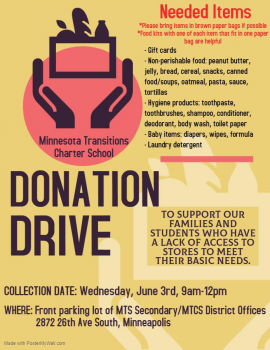Demonstrations, Black Lives Matter, and Perspectives from Abroad Posted by Chelsea B on Jun 10, 2020 in Culture, Vocabulary
Last week’s blog post was a small attempt to emotionally respond to the killing of George Floyd via music. Events in my home state have continued to spark conversations and protests abroad as people work to bring injustices to light in their own communities. It is difficult to discuss, but avoiding it is simply not an option. I will share a few sources that my students and I have used over last week, and three conclusions I drew from our classes.
Speaking of my students, I feel really lucky to have students living all over the world. From Hong Kong, to Australia, France, Sweden, and various states in the U.S., they bring a variety of lived experience, and all have unique reasons for studying Swedish. They are constantly sharing personal stories and reflections in class, and this has been no different in our recent discussions. Trying to make sense of what is happening and asking ourselves difficult questions has lead to three main topics of conversation.
First, students wanted my perspective as a Minnesotan. While I do not live in Minneapolis at the moment, I did live and work in South Minneapolis, in the neighborhoods where much of the unrest is taking place. A fellow Swedish instructor shared the soundbite below that she has been using with her students. It details some of the early scenes in Minneapolis as described by native Swede Maj-Britt Syse, co-owner of a Scandinavian import store and café in the Midtown Global Market. Midtown Global Market, located on Lake Street, houses a sizable sampling of the diverse food cultures in Minneapolis. I do not know Maj-Britt personally, but if I needed a good mandelkringle, that was my go-to. See Maj-Britt’s interview with Aftonbladet: Svenska Maj-Britt, 62, i Minneapolis: ”En mardröm”
“De våldsamma protesterna i USA efter den svarte tvåbarnspappan George Floyds död sprider sig. Mitt i kaoset i Minneapolis, där allt började, bor svenska Maj-Britt, 62.
– En mardröm. De första nätterna kunde jag inte sova.
Below is a poster, and just one example of dozens of efforts by Minneapolitans to help their neighbors in need. People have been cleaning the streets, donating food, and other essential items to people in affected areas (it’s not på svenska, but I struggled to find much media in Swedish on the cleanup efforts).

For my beginners to intermediate students, I used this 8sidor.se article to sum up the early protests in this article from June 1, “Protesterna fortsätter i USA.” Here is our beginning word list:
att protestera – to protest
mot rasism – against racism
våld – violence
att eld – to burn
fredlig – peaceful
våldsam – violent
att skjuta – to shoot
tårgas – tear gas
gummikulor – rubber bullets
att andas – to breathe
en svart man – a black man
Second, many of my foreign students were wondering – “What does racism really look like in the U.S.?” Many of them noted seeing films about the American South in the 1960’s, putting systemic racism in the country’s past. I found a very fitting discussion on SVT’s Sverige möts. The question was “Finns det likheter mellan Sverige och USA när det gäller rasism?” Are there similarities between Sweden and the U.S. in terms of racism?
A panel discussion was brought together to answer this question in response to the Black Lives Matter demonstations in Swedish cities like Stockholm, Göteborg, and Malmö. Historian Lars Trädgårdh has lived in the U.S. for 40 years and says it’s “Oanständigt att jämföra länderna,” that it is “obscene” to compare the two countries and that this is about the history of black oppression in the United States specifically. Another panelist Michael Popoola, countered by asking, “Vad är det som gör att folk känner igen sig och reagerar?”
This is a question that brings international perspectives into to picture, that although the history of racism in the U.S. cannot be directly compared to that of other countries, what is it then that is resonating with folks and making them react? Watch the entire discussion here.
Lastly, all my students agreed that we have work to do. Donating money to neighborhoods and businesses in need, raising their voices on social media, calling and emailing their local representatives, and adding to their reading lists are a few concrete steps they have already taken.
In future blog posts, I would like to cover some of my favorite Swedish writers of color who are championing these discussions in novels, songs, plays, and open letters.

Build vocabulary, practice pronunciation, and more with Transparent Language Online. Available anytime, anywhere, on any device.






Comments:
Viva:
Dear Chelsea,
Thank your for your blog. I am learning swedish and it is so discouraging at times. Your posts keep my motivation going. How did you learn? How did you overcome barriers?
Thank you.
Chelsea B:
@Viva Hej! Glad you are enjoying the blog! My best advice is to find content that relates to your personal interests in Swedish. If you like film, music, or literature, find the equivalent in Swedish. This, combined with your regular study should help to keep you motivated!